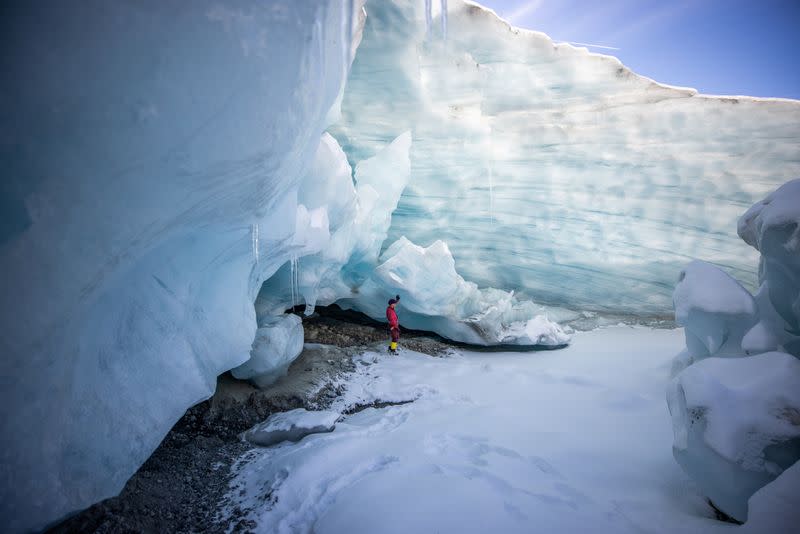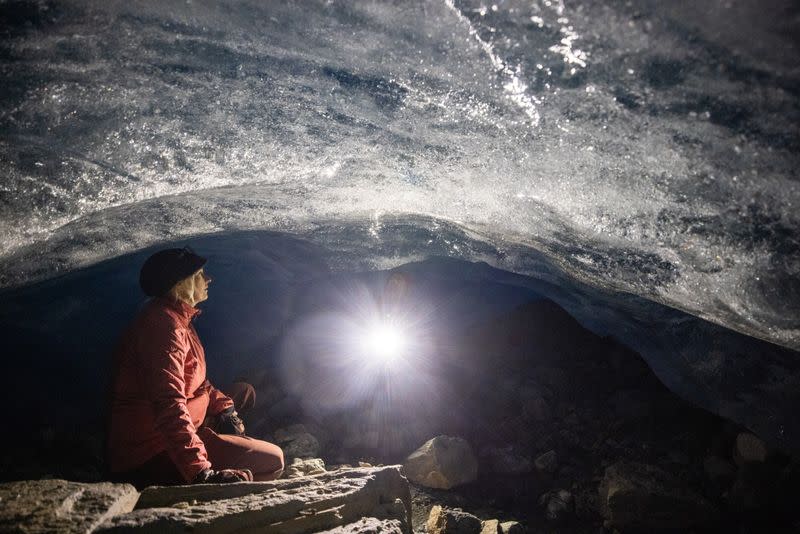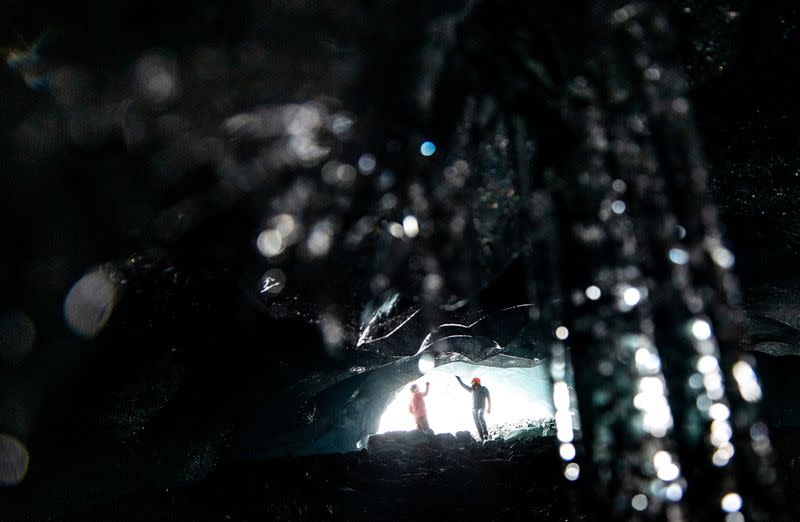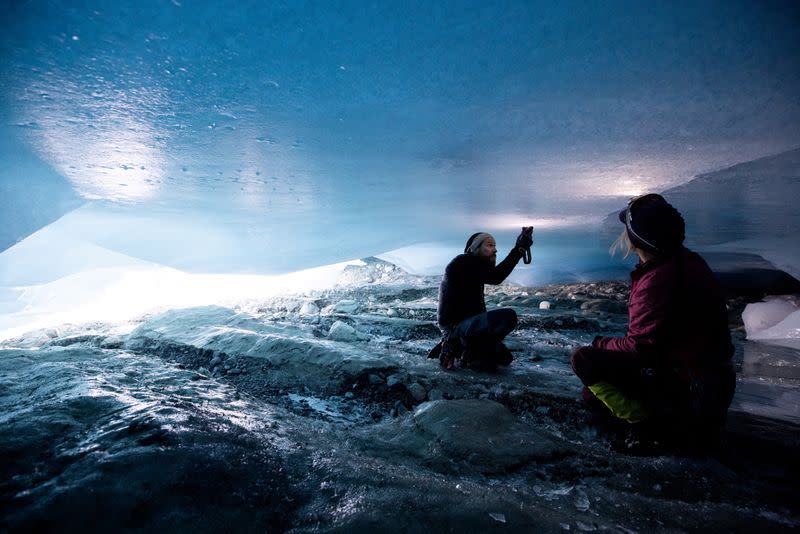Alien world under Austria's doomed glaciers tells tale of their collapse
By Lisi Niesner
JAMTALFERNER GLACIER, Austria (Reuters) - Scientists are venturing inside otherworldly ice caves growing beneath Austria's doomed glaciers to study why they are melting even faster than expected, and understand the fate that will befall glaciers elsewhere if climate change is not halted.
It is already too late to save the glaciers of the eastern Alps, which scientists now say are past the point of no return and will be gone completely in the next few decades.
The eerie blue caverns beneath them hold clues as to how the ice -- which built up over millennia and melted over decades -- collapsed far faster than expected. That could help communities that depend on glaciers in other parts of the world to better manage their decline.
"We can't do anything anymore for eastern Alpine glaciers. But here we can see what happens if we do nothing for the other glaciers," said Andrea Fischer, who brought a photographer into the caverns beneath the Jamtalferner glacier in the Tyrolean Alps, towering above the Austrian border with Switzerland.
The Jamtalferner is among Austria's 30 largest glaciers and one of 10 where scientists take very precise measurements annually, documenting the now irreversible decline.
The hollows are eroding the glaciers from within, as warmer air and meltwater come into contact with ever more of the ice, until it collapses.
"These holes are a typical sign of collapse that we observe. It is also a reason it happens so quickly - the ice is completely eroded and this process is not visible from the surface, then suddenly it all implodes," Fischer, acting director of the Austrian Academy of Sciences' Institute of Interdisciplinary Mountain Research, told Reuters.
(Additional reporting by Francois Murphy; Writing by Francois Murphy; Editing by Peter Graff)

 Yahoo Finance
Yahoo Finance 









